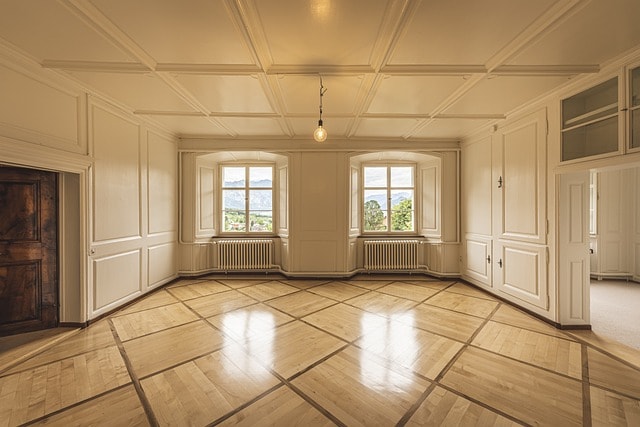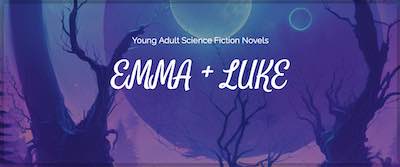In today’s competitive real estate market, agents and professionals are constantly seeking innovative strategies to stand out, attract potential buyers, and close deals faster. One game-changing tool that has revolutionized the industry is 360 virtual tours. This technology not only enhances property listings but also transforms how real estate marketing strategies are executed. In this comprehensive guide, we’ll explore how 360 virtual tours can help you sell homes 50% faster, dive into actionable real estate marketing ideas, and highlight why global media exposure is critical for success.
Why 360 Virtual Tours Are Dominating Real Estate Marketing

The real estate business has evolved dramatically, with online marketing and social media platformsbecoming central to reaching a target audience. Traditional methods like open houses and static photos are no longer enough. Buyers demand immersive experiences, and 360 virtual tours deliver exactly that.
Studies show that listings featuring virtual tours receive 40% more engagement and sell 30-50% faster than those without. For real estate agents, this technology is a cornerstone of a modern real estate marketing plan. It allows potential buyers to explore properties remotely, saving time for both parties and filtering serious inquiries from casual browsers.
Key benefits include:
Enhanced property listings: Showcase every angle of a home, including hidden details.
Increased social media shares: Virtual tours are highly shareable, boosting visibility on platforms like Facebook and Instagram.
Competitive edge: Stand out in crowded local markets by offering cutting-edge marketing materials.
Building a Winning Real Estate Marketing Strategy
To maximize the impact of 360 virtual tours, integrate them into a holistic real estate marketing strategy. A strong real estate branding strategy can set you apart from the competition and build trust with potential clients. Here’s how:
1. Leverage Social Media Posts
Social media is a goldmine for real estate professionals. Platforms like Instagram, TikTok, and LinkedIn thrive on visual content. Share snippets of your virtual tours in social media posts, paired with captions that highlight unique selling points (e.g., “Step inside this stunning 4-bedroom home in [Local Community]”). Use hashtags like #RealEstateTech or #VirtualHomeTour to reach broader audiences.
Pro Tip: Collaborate with local businesses or influencers to amplify your posts. For example, partner with a local interior designer to narrate a virtual tour.
2. Optimize Property Listings
Incorporate 360 tours directly into your real estate listings on platforms like Zillow, Realtor.com, and your agency’s website. Ensure your marketing materials include high-quality images, video walkthroughs, and detailed descriptions. This approach caters to today’s buyers, who spend 60% of their home search online.
3. Target the Right Audience
Understanding your target audience is crucial. For luxury properties, emphasize high-resolution tours and drone footage. For first-time buyers, focus on affordability and neighborhood perks. Use tools like Facebook Ads to retarget users who engaged with your virtual tours.
Enhancing Listings with Virtual Staging and VR Tours

In the competitive world of real estate marketing, standing out is crucial. One way to achieve this is through virtual staging and VR tours. These innovative tools allow potential buyers to visualize a property’s potential, making it easier for them to imagine themselves living there.
Virtual staging involves digitally furnishing a home to showcase its best features. This technique can highlight the spaciousness of a living room, the coziness of a bedroom, or the functionality of a kitchen. By presenting a property in its best light, virtual staging can significantly increase engagement and interest.
VR tours take this a step further by providing an immersive experience. Potential buyers can explore a property as if they were physically there, examining every nook and cranny. This level of detail helps buyers make more informed decisions and can lead to faster sales.
For real estate agents, a well-executed virtual staging and VR tour strategy can be a game-changer. It not only enhances property listings but also positions agents as forward-thinking professionals in the real estate market. By leveraging these tools, agents can attract more potential buyers and close deals more efficiently.
Utilizing Technology and Tools
In today’s digital age, technology and tools are indispensable for real estate agents looking to streamline their marketing efforts and reach a wider audience. From CRM systems to social media scheduling tools, technology can help agents save time, reduce costs, and increase engagement with their listings.
CRM systems allow agents to manage client relationships more effectively, keeping track of interactions and ensuring timely follow-ups. Social media scheduling tools enable agents to plan and automate their posts, ensuring a consistent online presence without the need for constant manual updates.
Additionally, analytics tools provide valuable insights into the performance of marketing campaigns. By understanding which strategies are working and which aren’t, agents can make data-driven decisions to optimize their efforts.
A well-executed technology and tool strategy not only enhances efficiency but also helps agents stand out in the crowded real estate market. By embracing these innovations, real estate professionals can reach more potential buyers, engage them more effectively, and ultimately, close more deals.
Building a Referral Network
A strong referral network is a powerful asset for any real estate agent. It can generate leads, increase sales, and build lasting relationships with potential clients. By establishing a network of satisfied clients, industry peers, and local business owners, agents can create a steady stream of referrals.
Building a referral network starts with providing exceptional service. Happy clients are more likely to recommend an agent to their friends and family. Regularly staying in touch with past clients through newsletters, holiday greetings, or check-in calls keeps the agent top of mind.
Networking with local business owners and other industry professionals can also yield referrals. Collaborating on community events or cross-promoting services can build mutually beneficial relationships.
A well-executed referral network strategy not only helps generate leads but also establishes credibility and trust with potential clients. In a market where trust is paramount, a strong referral network can be the key to long-term success for real estate agents.
Real Estate Video Marketing: The Power of Storytelling

While 360 tours are transformative, pairing them with real estate video marketing creates an unbeatable combo. Videos add emotion and context, turning a house into a “home.” Consider these ideas:
Behind-the-scenes clips: Showcase the process of creating a virtual tour.
Client testimonials: Feature satisfied buyers discussing how the tour helped them visualize the space.
Neighborhood highlights: Film nearby parks, schools, and local businesses to sell the lifestyle.
Platforms like YouTube and Vimeo are ideal for hosting these videos. Embed them in email campaigns and social media platforms to drive traffic.
The Role of Personal Branding in Real Estate
In a crowded market, your real estate branding sets you apart. Use 360 virtual tours to position yourself as a tech-savvy, forward-thinking agent. Share case studies on your website (e.g., “How I Sold a $2M Home in 10 Days Using Virtual Tours”). Highlight your expertise in local market trends during webinars or podcasts.
Bonus: Create a real estate brand style guide that includes your logo, colors, and tone of voice. Consistency builds trust with potential buyers.
Why Global Media Exposure Matters
Being featured in international press elevates your credibility and attracts high-net-worth clients. Publications like Forbes, The Wall Street Journal, and Architectural Digest frequently cover real estate tech innovations like 360 tours.
How to get noticed:
Pitch success stories to journalists (e.g., “How Virtual Tours Reduced Time-on-Market by 50%”).
Participate in industry conferences or webinars.
Collaborate with global platforms like Matterport or Kuula for co-branded content.
A single feature in a prestigious outlet can generate inbound leads and establish you as a leader in real estate marketing.
Case Study: Transforming a Local Business into a Market Leader
One local business owner in Miami leveraged 360 tours to dominate their local community. By embedding tours on their website and sharing them via social media posts, they increased website traffic by 200% and reduced average selling time from 90 to 45 days. Their strategy included:
Hosting virtual open houses with live Q&A sessions.
Creating a YouTube series, “Miami Homes Unlocked.”
Partnering with local business owners (e.g., cafes, gyms) to promote neighborhood perks.
Actionable Marketing Campaigns to Try Today

Seasonal Campaigns: Create “Summer Ready Homes” tours highlighting pools and outdoor spaces.
Email Series: Send personalized tours to potential buyers based on their preferences.
Interactive Ads: Use Facebook Carousel Ads to showcase multiple tour highlights.
Conclusion: Embrace Innovation to Stay Ahead
The future of real estate marketing lies in blending technology with creativity. By adopting 360 virtual tours, refining your marketing strategy, and pursuing global media exposure, you’ll not only sell homes faster but also build a lasting real estate brand.
About Us
At Vuga Media Group, we specialize in cutting-edge real estate marketing solutions. With over 500 successful cases and a passion for innovation, we help agents and agencies dominate their markets. Ready to sell 50% faster? Explore our services today.





